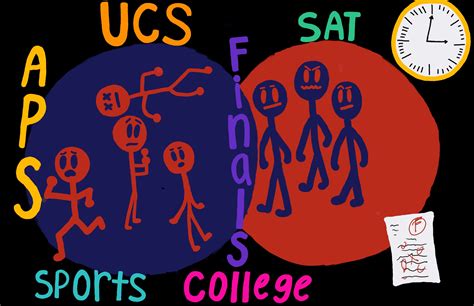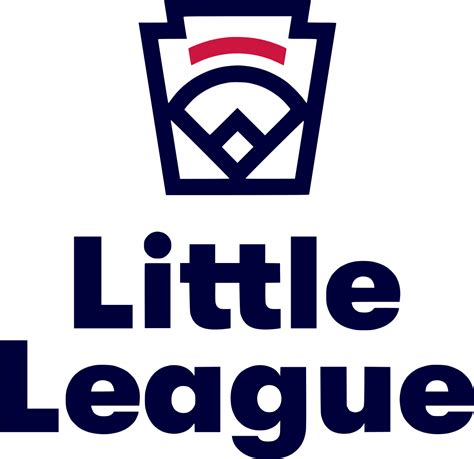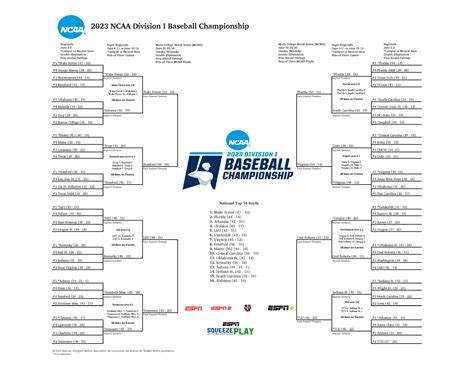Explore the transition in skill development from youth baseball, focusing on mental aspects, physical changes, coaching strategies, and the vital role of parental support.The Transition From Youth Baseball To High School Level
Embarking on the journey from youth baseball to high school competition is a pivotal moment for young athletes and their families. This transition not only involves adapting to new skills and higher expectations but also navigating the mental and physical changes that come with increased competition. As players shift from recreational leagues to the more demanding high school environment, understanding the nuances of skill development becomes essential. Moreover, effective coaching strategies and robust parental support play crucial roles in ensuring a smooth transition. In this article, we’ll explore the various aspects of this significant phase, offering insights and guidance for players, coaches, and parents alike to foster a positive and successful experience in high school baseball.
Understanding The Transition In Skill Development
The transition from youth baseball to high school level is marked by significant changes in skill development. At this stage, players must adapt to the increased demands of the game, which require both technical skill enhancement and tactical understanding. Let’s delve deeper into the critical aspects of this transition.
The Transition from youth baseball typically involves a shift from a more casual, fun-oriented playing environment to one that is more competitive and structured. The following are key elements that characterize this transition in skill development:
| Skill Development Element | Youth Baseball Focus | High School Baseball Focus |
|---|---|---|
| Technical Skills | Basic fundamentals (throwing, catching, batting) | Advanced techniques and specific skill refinement (pitch grips, bat speed adjustments) |
| Tactical Awareness | Basic understanding of game rules and positions | In-depth strategic thinking (game scenarios and situational plays) |
| Physical Conditioning | General fitness and agility | Sport-specific conditioning and strength training |
| Team Dynamics | Emphasis on fun and social interaction | Building camaraderie and understanding roles within a competitive team |
To successfully navigate the transition in skill development, players need to prioritize their training and focus on both individual improvement and team success. This means regularly practicing techniques, understanding game situations, and developing fitness levels that meet the demands of high school baseball.
As players progress, continuous feedback from coaches becomes critical. Coaches must observe individual and team performance closely, offering insights and adjustments that help players refine their skills effectively. Overall, adapting to the demands of high school baseball will lead athletes to not only enhance their skills but also prepare them for potential opportunities at higher levels of competition.
Mental Aspects Of The Transition From Youth Baseball
The transition from youth baseball to high school level competition is as much a mental shift as it is a physical one. Young athletes often face heightened expectations, which can lead to anxiety and self-doubt. Understanding these psychological factors is crucial in addressing the challenges that come with The Transition.
One of the primary mental hurdles is the pressure to perform. In youth baseball, the focus is typically on fun and skill development, while high school baseball tends to emphasize winning and performance metrics. This shift can lead to an increased fear of failure among players, impacting their confidence and overall enjoyment of the game.
Coaches and players should encourage a healthy mindset during The Transition. Emphasizing growth over perfection can help alleviate the pressures faced by young athletes. Here are some key mental aspects to consider:
| Aspect | Importance | Strategies |
|---|---|---|
| Self-Esteem | Influences on-field performance | Positive reinforcement, focus on progression |
| Stress Management | Helps maintain focus during games | Meditation, deep breathing exercises |
| Goal Setting | Provides direction and motivation | SMART goals (Specific, Measurable, Achievable, Relevant, Time-bound) |
| Team Cohesion | Enhances camaraderie and support | Team-building activities, group discussions |
Addressing these mental aspects can play a pivotal role in facilitating a smoother transition. By focusing on building resilience and confidence, players will not only perform better but also enjoy their time on the field.
Key Physical Changes During The Transition Phase
As young athletes progress from youth baseball to high school baseball, they encounter several significant The Transition physical changes. Understanding these changes is essential in preparing players for the heightened demands of the sport at a higher level.
- Increased Strength and Endurance: During this phase, many players experience growth spurts and increase their overall strength and endurance. This improvement allows them to perform better during games and practices.
- Refined Motor Skills: Players often show enhanced coordination and control over their movements. This refinement is crucial as they face more advanced pitching and defensive strategies.
- Heightened Speed and Agility: Many athletes develop greater speed and agility, necessary for making quick plays and covering bases effectively. This change can significantly impact a player’s performance on the field.
- Increased Physical Demands: The intensity of high school baseball places greater physical stress on young athletes. Players need to adapt to longer practice sessions and more competitive gameplay.
- Recovery and Injury Management: As physical demands rise, understanding the importance of recovery becomes vital. Players must learn to manage their bodies effectively to prevent injuries that could derail their progress.
Recognizing and adapting to these The Transition physical changes is crucial for young athletes as they navigate their entrance into high school baseball, ultimately enhancing their performance on the field.
Coaching Strategies For A Smooth Transition
As players progress into higher levels of competition, the coaching strategies must evolve to facilitate The Transition from youth baseball to high school-level play. Here are several effective strategies that coaches can implement:
- Emphasize Fundamentals: Reinforce the basic skills of baseball, including throwing, catching, and batting. A strong foundation will help ease the transition to more complex plays and strategies.
- Team Chemistry: Promote teamwork and communication among players. Activities that build camaraderie can help players feel more comfortable with one another, fostering a positive team environment.
- Position-Specific Training: Identify each player’s strengths and weaknesses to provide tailored coaching. Specialized drills for infielders, outfielders, and pitchers can significantly enhance performance.
- Game Intelligence: Teach players to understand the game’s strategy, including situational awareness and decision-making. Discuss game scenarios during practice to improve their ability to adapt during matches.
- Feedback and Support: Maintain consistent communication with players. Offer constructive feedback and recognize their efforts, which can boost confidence and motivation during this critical phase.
- Physical Conditioning: Since physical changes occur during The Transition, incorporating strength and conditioning programs can prepare players for the demands of high school baseball.
- Emotional Preparation: Acknowledge the emotional challenges players face, including pressure and expectations. Providing guidance on coping strategies can help them navigate these feelings effectively.
Implementing these strategies effectively not only aids in The Transition but also sets the stage for ongoing player development and success at the high school level.
Parental Support: A Crucial Element In The Transition
As young athletes navigate The Transition from youth baseball to high school level play, the role of parents becomes increasingly vital. Parents should understand that this phase involves significant changes that can affect their child’s emotional and physical development.
One of the primary ways parents can provide support is by fostering an environment that encourages open communication. Listening to their child’s experiences, concerns, and aspirations in baseball can help build the confidence necessary to face challenges. It’s also important for parents to celebrate achievements—both big and small—to reinforce their child’s efforts during this demanding transition.
In addition to emotional support, parents can assist their young athletes by promoting a positive mindset towards competition. High school baseball can be more intense, with increased pressure to perform. Parents should help their children focus on personal growth rather than solely on winning. This perspective can reduce anxiety and foster a love for the game.
A practical approach that parents can take involves engaging with the team community. Attending games, volunteering at events, and building relationships with coaches and other parents can create a supportive network for both the athlete and their family. This involvement also helps parents better understand the dynamics of high school baseball, including the expectations and the competitive landscape.
Moreover, ensuring that their child is physically prepared for The Transition is essential. Parents can support by encouraging proper nutrition, a balanced training regimen, and injury prevention strategies. This holistic approach not only prepares young athletes for the physical demands of high school baseball but also underlines the importance of health and well-being.
The role of parental support during this critical transition cannot be overstated. By providing emotional backing, fostering a positive mindset, engaging with the community, and ensuring physical readiness, parents can significantly influence their child’s success in navigating The Transition to high school baseball.
Frequently Asked Questions
What key differences should players expect when transitioning from youth baseball to high school baseball?
Players will experience increased competition, more advanced skills, a greater emphasis on strategy, and a shift in the physical demands of the game.
How can young athletes prepare for the jump to high school baseball?
Young athletes can prepare by improving their physical fitness, working on their skills during the offseason, participating in competitive leagues, and seeking feedback from coaches.
What mental challenges might players face during this transition?
Players may face increased pressure to perform, challenges in adapting to new coaching styles, and the need to maintain focus in more intense game situations.
How important is teamwork in high school baseball compared to youth baseball?
Teamwork becomes significantly more important at the high school level, as players must learn to work cohesively with teammates and understand their roles within the team’s strategies.
What role does physical conditioning play in high school baseball?
Physical conditioning is crucial for high school baseball players, as it enhances endurance, strength, and overall performance while reducing the risk of injuries.
Are there major rule changes that players should be aware of when moving to high school baseball?
Yes, players may encounter different bat regulations, game length, and pitching limits, so it’s important to review the specific rules of the high school league they will be joining.
How can parents support their children during this transition?
Parents can support their children by encouraging them to develop good work habits, attending games and practices, fostering a positive mindset, and helping them manage their time between sports and academics.









